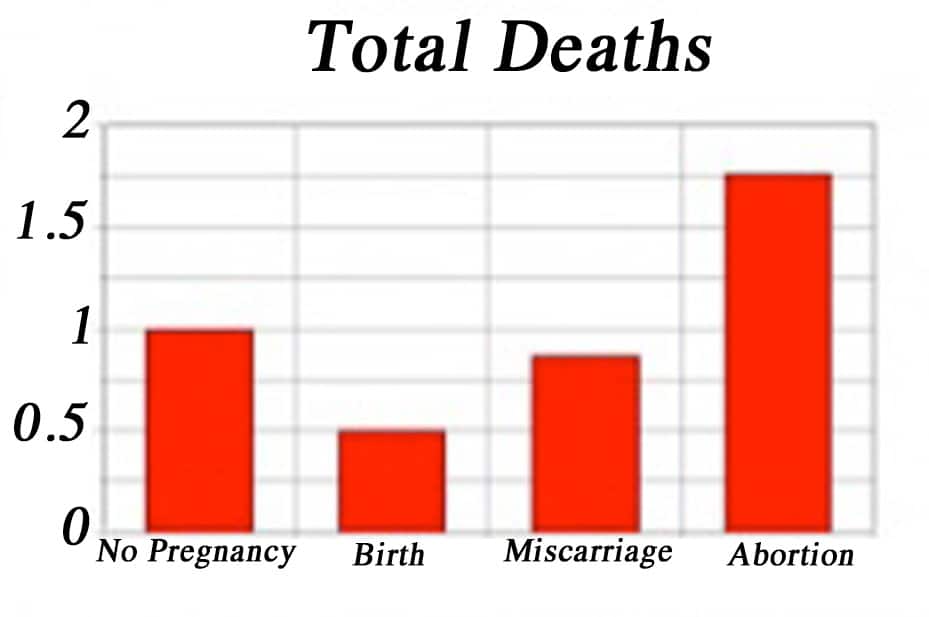Abortion is Not Safer for Women Than Childbirth

The Hysterical Ranting of Opponents of Ultrasound Legislation in Virginia Amount to a New Low
March 15, 2012National Pro-life Leader Thomas Glessner Applauds Gosnell Verdict
May 14, 2013Media outlets such as Time Magazine and Reuters have provided extensive coverage to an article recently published as “Original Research” and entitled, “The Comparative Safety of Legal Induced Abortion and Childbirth in the United States,” by Raymond and Grimes in the Feb, 2012 journal Obstetrics & Gynecology. The article concludes by stating: “Legal induced abortion is markedly safer than childbirth. The risk of death associated with childbirth is approximately 14 times higher than that with abortion. Similarly, the overall morbidity associated with childbirth exceeds that with abortion.”
Is this the truth?
NIFLA doesn’t believe so and recommends that Pregnancy Medical Clinics be aware of the errant methodologies of this study and be able to explain such errors to media-savvy pregnant women who question the safety of childbirth over abortion.
In order to comprehend the faulty research in the Raymond and Grimes’ article, there is a helpful critique and refutation of it, written by Priscilla K. Coleman, Ph.D., Professor of Human Development and Family Studies at Bowling Green State University. Coleman says:
You need to know that the data reported by abortion clinics to state health departments and ultimately to the CDC significantly under-represents abortion morbidity and mortality for several reasons: 1) abortion reporting is not required by federal law and many states do not report abortion-related deaths to the CDC; 2) deaths due to medical and surgical treatments are reported under the complication of the procedure (e.g., infection) rather than the treatment (e.g., induced abortion); 3) most women leave abortion clinics within hours of the procedure and go to hospital emergency rooms if there are complications that may result in death; 4) suicide deaths are rarely, if ever, linked back to abortion in state reporting of death rates; 5) an abortion experience can lead to physical and/or psychological disturbances that increase the likelihood of dying years after the abortion, and these indirect abortion-related deaths are not captured at all.1
(To understand why abortion is under-reported with related statistics, review the Guttmacher Institute State Policies on abortion at www.guttmacher.org/statecenter/spibs/spib_ARR.pdf, which provides information on reporting requirements for abortion.)
As an example of the faulty statistics used by Raymond and Grimes, one need only consider California, the most populous state where almost 1 in 8 US residents live. California has no reporting requirements for abortion. Additionally, only 27 states require any type of abortion complication reporting, with 3 of the 4 most populous states not requiring this information.
David Reardon, Ph. D, and researcher on abortion’s effects, states;
Hundreds of news articles appeared this week claiming, once again, that the best medical evidence shows that abortion is safer than childbirth. The rash of articles was all tied to a blatant piece of propaganda published in Obstetrics and Gynecology by Dr. David Grimes, an abortion provider and chief propagandist for “medical proof” of abortion’s safety. . . In short, Grimes used a very incomplete record of abortion-associated deaths and compared it to a complete record of deaths associated with non-aborted pregnancies, and found that the death rate is lower. Therefore, he concludes, abortion is safer than childbirth.”2
Finland study about Abortion Risk
Further, Reardon provides evidence from research in Finland that clearly contradicts the Grimes article. Finnish researchers found that women are four times more likely to die in the year following abortion than women who give birth. Similar findings were reported in a record-based study of California women. Observe the graph below taken from Afterabortion.org regarding the study from Finland.

The figure above shows the age-adjusted relative risk of death in the year following a birth, miscarriage, or abortion compared to the rate of death among women not pregnant. The results are from a multi-year study of all women in Finland, linking death certificates to central registries for pregnancy outcomes. It clearly shows abortion is associated with an elevated risk of death, while carrying to term is associated with a lowered risk of death.
Additionally a previous, insightful article written by Reardon and others in the Journal of Contemporary Health Law, 2003, regarding the long-term effects of abortion can be linked from his article. For a complete review of the literature on mortality rates related to abortion and childbirth, Reardon suggests readers should study “Deaths Associated with Abortion Compared to Childbirth: A Review of New and Old Data and the Medical and Legal Implications.” Its graphs (example above) are particularly informative with easy-to-grasp facts about abortion’s devastating consequences for women. A copy of this article would be helpful to have in your PMC for reference or to allow clients to read.3
Coleman concludes her critique of the Raymond and Grimes study noting that “pregnant women considering their options deserve accurate information about comparative risks.”
So, why have Raymond and Grimes chosen to disrespect women and medical professionals by knowingly offering a false impression of the relative risk of death between abortion and childbirth? When one reads several paragraphs of their report that is devoted to a political discussion of state-level informed consent laws, the answer to this question seems pretty obvious.”4
In the Pregnancy Medical Clinic, it is important that medical information shared with patients by medical professionals should, when possible, utilize referenced materials, such as the ones cited below. Pregnancy Medical Clinics exist to serve mothers at risk for abortion with integrity and providing medical evidence based upon credible information. The Raymond and Grimes article is not credible.
Mothers considering abortion deserve honest information. Providing them with copies of the articles listed here and providing information to access the websites where they are located is strongly encouraged.
References
1. Coleman, P. A serious misrepresentation of the relative safety of induced abortion compared to childbirth published in a leading medical journal. Retrieved February 6, 2012 from www.wecareexperts.org/content/serious-misrepresentation-relative-safety-induced-abortion-compared-childbirth-published-l-0
2. Reardon, D., (2012, January). Rehash of abortion safety claim ignores all inconvenient evidence to the contrary. Retrieved February 6, 2012, from afterabortion.org/2012/re-hash-of-abortion-safety-claim-ignores-all-inconvenient-evidence-to-the-contrary
3. Reardon, D., Straham, T., Thorp, J., Shuping, M., (2004). Deaths associated with abortion compared to childbirtha[euro]”a review of new and old data and the medical and legal implications. Journal of Contemporary Health Law & Policy 2004; 20(2);279-327. Retrieved February 6, 2012, from www.afterabortion.org/pdf/DeathsAssocWithAbortionJCHLP.pdf
4. Coleman (2012).





